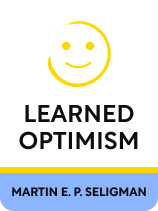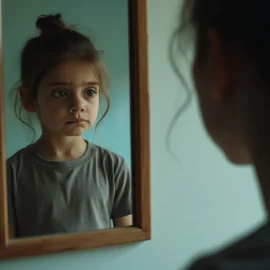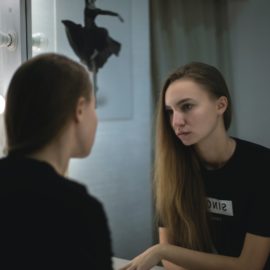

This article is an excerpt from the Shortform book guide to "Learned Optimism" by Martin E. P. Seligman. Shortform has the world's best summaries and analyses of books you should be reading.
Like this article? Sign up for a free trial here.
Want to learn how to be more optimistic? How can you become an optimist if you’re naturally pessimistic?
In Martin Seligman’s book, Learned Optimism, Seligman explains how you don’t have to live your life being pessimistic just because you weren’t conditioned to be an optimist. Seligman believes anyone can learn optimism by cultivating a balanced mindset.
Read on to learn Seligman’s advice for how to be more optimistic, including a short exercise at the end.
Seligman’s Learned Helplessness
Seligman is a professional psychologist, teacher, and author. In his search for how to be more optimistic, Seligman created his theories of learned helplessness and learned optimism, based on his own laboratory studies. He began these studies in the 1960s and has continued tweaking and reexamining them to the present day.
Seligman’s theory of learned helplessness has become widespread, both in the field of psychology and among laypeople. However, Learned Optimism was published in 1990, and there have been significant advances in the field of psychology since then. Below we share Seligman’s actionable advice for how to be more optimistic.
How Are Pessimists & Optimists Different?
Broadly speaking, we can group all thought patterns into optimism and pessimism.
Seligman says that pessimists tend to generalize and personalize negative events. In other words, they think that bad things “always” happen, and that it’s because there’s something wrong with them. Conversely, when something good happens, they assume that it’s just a stroke of luck: temporary and due to external factors.
(Shortform note: Pessimists tend to have what psychologist Carol Dweck describes in Mindset as a fixed mindset: They believe that people’s attitudes and abilities are set at birth and can’t be changed. As a result, they don’t think there’s any way to improve their lives—nature, or fate, or some other higher power has put them into a certain situation, and there’s nothing they can do about it.)
Optimists are the opposite: They tend to generalize and personalize positive events. When something good happens, they think it’s because of their own abilities, or simply because good things always happen to them. Conversely, when something bad happens, they see it as a temporary setback due to external causes—they’ll say something like, “Things didn’t work out this time.”
(Shortform note: According to Dweck, the opposite of a fixed mindset is a growth mindset. In simple terms, someone with a growth mindset believes that people can change; they can improve their skills and their attitudes in order to make positive changes in the world around them. A growth mindset goes hand-in-hand with optimism because someone with a growth mindset will see problems as temporary setbacks—challenges to overcome—instead of fixed and unchangeable truths about the world.)
To Be More Optimistic, Find a Balance
Seligman says that a pessimistic mindset does have one advantage over an optimistic one: Pessimists tend to assess their situations more realistically.
Therefore, Seligman concludes by saying that we should balance our optimism with realism, a mindset he calls flexible optimism. The good news is that, because we’ve learned optimism as a skill set—instead of having it as a natural state of mind—we can choose when to apply those skills. For example, if someone is upset with us, we can start by asking ourselves if we’re really to blame (rather than the pessimistic approach of assuming that we are at fault, or the optimistic approach of assuming that we aren’t). With that realistic approach we’ll be able to take appropriate action to fix the situation; even if we decide that all we can do is apologize.
(Shortform note: Seligman is saying that realism is a balanced, healthy form of pessimism, but they’re not quite the same thing. The best way to tell the difference between pessimism and realism is to consider whether you’re emotionally invested in your explanation. In other words, are you seeing things calmly and rationally (realism), or are you casting yourself in a story as the villain or the victim (pessimism)?)
Exercise: Find Your Balanced Optimism
Now that you’re familiar with Seligman’s concepts of pessimism and optimism, take some time to think about which way your own thoughts tend to go. Also, consider how you might develop a stronger sense of balanced optimism. You can repeat this exercise as often as needed, and you might find it especially useful after a difficult or upsetting event.
- Describe something negative that has recently happened to you. Explain why you think things turned out the way they did.
- What makes this explanation either optimistic or pessimistic? For example, does the explanation rely on some perceived shortcoming or mistake of yours (pessimism)? Does the explanation suggest that the problem is temporary, or that you’ll do better next time (optimism)?
- How could you explain this event in a way that balances optimism with realism?
(Note: On rare occasions, there may not be an optimistic explanation for something. However, even in those cases, keeping a mindset of realism rather than pessimism will help you to stay in control and respond appropriately.)

———End of Preview———
Like what you just read? Read the rest of the world's best book summary and analysis of Martin E. P. Seligman's "Learned Optimism" at Shortform.
Here's what you'll find in our full Learned Optimism summary:
- How to break out of a pessimistic, powerless mindset
- How to develop a mindset of empowerment, optimism, and confidence
- How to balance your optimism with realism






